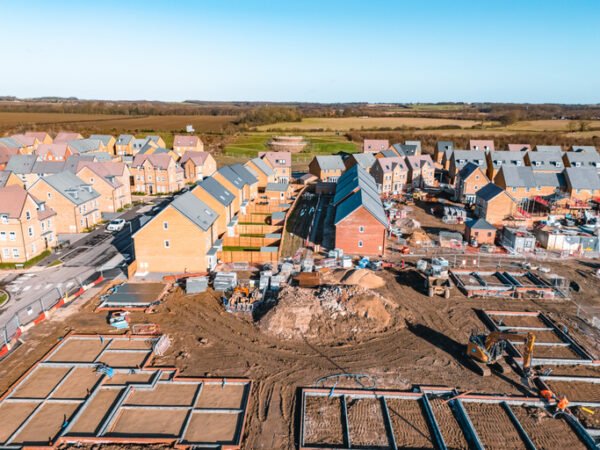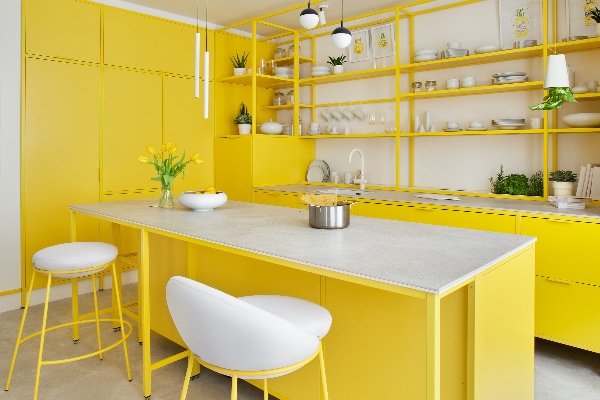It’s not a new idea…
Heat pumps have been used in areas like Scandinavia for decades and were even trialled in the UK in the 1980s. But it’s only over the last seven or eight years, following the introduction of inverter-driven technology by the commercial sector, that they’ve become a truly viable option for the majority of UK homes.
Heat pumps can now match the need of the house at any given time and maintain the temperatures required in the home without guzzling energy. This means heat pumps can deliver reliable heating and hot water in a sustainable way with low running costs, less maintenance and no need for gas safety certificates.
Heat pumps have already been installed in tens of thousands of homes throughout the UK, from the Isle of Wight to the Orkney Isles. The Pumping House is just one example of how heat pump technology can work in a restoration project.
Seal leaks first
Like any heating system, a heat pump works most effectively in properties with high levels of thermal efficiency, so the first question anyone considering a heat pump should ask themselves is whether they need to improve their home’s energy performance.
To qualify for the RHI, the government’s Green Deal Assessment insists that you undertake basic improvements, such as cavity wall insulation, loft insulation and double glazing, before installing a heat pump.
All credible heat pump manufacturers will also tell you that this is the first step you need to look at before forking out for a heat pump. Once you’ve dealt with any leaks in your walls, roof, windows and doors, a heat pump will almost certainly cut down your running costs – and could also significantly reduce your carbon footprint.
It doesn’t matter how old your property is as heat pumps are now being used in almost every type of building – from modern flats and new buildings to Victorian solid brick conversions and historic stone cottages. Whatever the home, as long as it achieves modern levels of insulation and thermal efficiency, there is almost certainly a heat pump to suit it.
Potential savings
There are so many variables that it’s impossible to say exactly how much you could save if you install a heat pump. The size of the property will affect the capacity you need (and therefore the cost of the unit) and the savings will depend on the efficiency of your current heating system.
Data from the Building Research Establishment (BRE), the UK’s leading centre for independent advice for the built environment, suggest that heat pumps can offer significant reductions in running costs compared with conventional fossil fuel systems and direct electric systems.
With its MCS-certified Ecodan range, Mitsubishi Electric is the market leader in air source heat pumps – and the company has developed an online heat pump selection tool to help offer an insight into potential savings.
Whether for a single house, a school, a hotel or an apartment block, the calculator has been designed to help you find the right solution by personalising the information for you. You just need to select the property type and then fill in information about its size, to understand the capacity you need, plus details such as the age of the building and its current heating system.
The calculator then estimates how much a heat pump could save in running costs and carbon emissions against gas, oil, LPG and direct electric heating, and illustrates what the RHI payments would be.
Fit for modern lifestyles
 Modern systems like Ecodan offer advanced controls including wi-fi operation, automated weather compensation and intelligent room sensors. Together, these features fit well with modern lifestyles and make heat pump heating easier for homeowners.
Modern systems like Ecodan offer advanced controls including wi-fi operation, automated weather compensation and intelligent room sensors. Together, these features fit well with modern lifestyles and make heat pump heating easier for homeowners.
Ecodan is also the only air source heat pump that’s been accredited by the Noise Abatement Society; its ‘Quiet Mark’ certification means you won’t notice it working away in the background.
Mitsubishi Electric has invested heavily in the R&D facilities at its Livingston manufacturing plant, focusing on homeowner experience, simplifying installation and making maintenance and monitoring even easier.
Remote energy monitoring now comes as standard on every Ecodan that leaves the factory, which Mitsubishi Electric sees as a key way of demonstrating the efficacy of heat pumps. The feature allows households to measure and maximise efficiency and minimise running costs.
To get a rough idea of the savings you could make by installing a heat pump, have a look at the calculator at ecodan.co.uk.
 Play Video about This Rock Might Just Save The World
Play Video about This Rock Might Just Save The World Play Video about Play 2 hours of rock
Play Video about Play 2 hours of rock Play Video about Play 2 hours of brook
Play Video about Play 2 hours of brook Play Video about Play 2 hours of sheep
Play Video about Play 2 hours of sheep


















 At the same time as reducing emissions by 80% (on 1990’s levels) by 2050, we all need to find sustainable, low-cost ways of keeping our houses warm and comfortable all year round. For most UK homes, gas boilers are a relatively cheap option, and the current price of oil is also helping those who aren’t connected to the gas network.
At the same time as reducing emissions by 80% (on 1990’s levels) by 2050, we all need to find sustainable, low-cost ways of keeping our houses warm and comfortable all year round. For most UK homes, gas boilers are a relatively cheap option, and the current price of oil is also helping those who aren’t connected to the gas network. Modern systems like Ecodan offer advanced controls including wi-fi operation, automated weather compensation and intelligent room sensors. Together, these features fit well with modern lifestyles and make heat pump heating easier for homeowners.
Modern systems like Ecodan offer advanced controls including wi-fi operation, automated weather compensation and intelligent room sensors. Together, these features fit well with modern lifestyles and make heat pump heating easier for homeowners.
























